The Fallow Deer of Charlecote
This Fallow Deer has a lot to say:
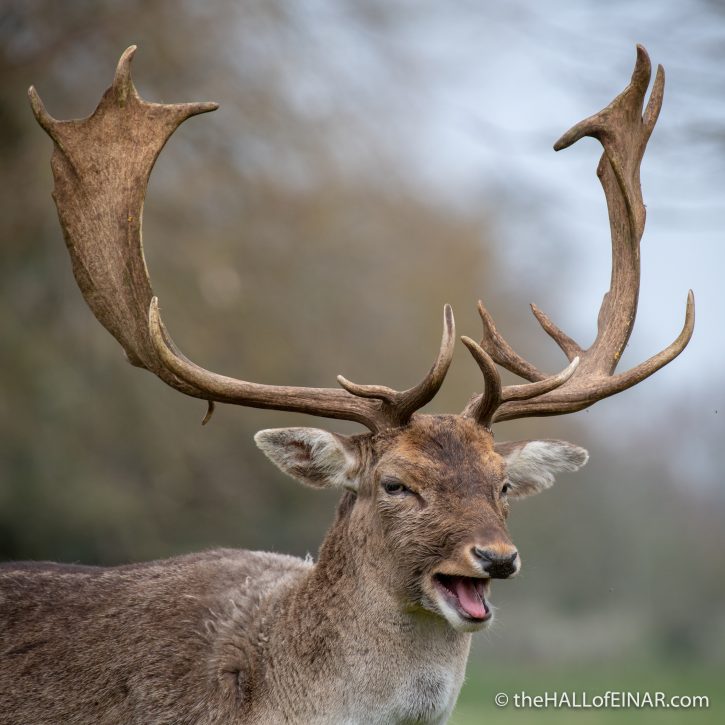
I’ve just spotted a brown road sign and I’ve diverted the car in the middle of a long journey. I’m a member of the National Trust and want to make good use of my membership. If I’m going to fund the lifestyle of rich and entitled families, and pay to maintain their properties while they often continue to live there, then I want to get good value out of my membership.
I’ve stopped at Charlecote House near Stratford-Upon-Avon. The National Trust tells you many things about the Lucy family who built Charlecote House. What they don’t tell you is how they got the money to build such a fabulous property in the 16th Century. The ‘new’ Charlecote, completed by the first Sir Thomas Lucy in 1558, was one of the first great Elizabethan houses. It’s only a few miles from where William Shakespeare grew up and he would have known the house.
There’s a story about Shakespeare and the Fallow Deer of Charlecote in the first published biography of Shakespeare, written by Thomas Rowe for his 1709 edition of the plays:
He had, by a misfortune common enough to young fellows, fallen into some ill company: and among them, some that made a frequent practice of deer-stealing, engaged him with them more than once in robbing a park that belonged to Sir Thomas Lucy, of Charlecote, near Stratford. For this he was prosecuted by that gentleman, as he thought, somewhat too severely.
It’s a legend still repeated. It’s likely to be a complete confection; a product of a feckless later relative, a wild bachelor with a love of travel, fashion and married women, called George Lucy. It’s a story from the 1769 Shakespeare Jubilee, organised by David Garrick in Stratford-upon-Avon. It probably increased ticket sales.
The Park is very serene today. I can’t see anyone poaching:
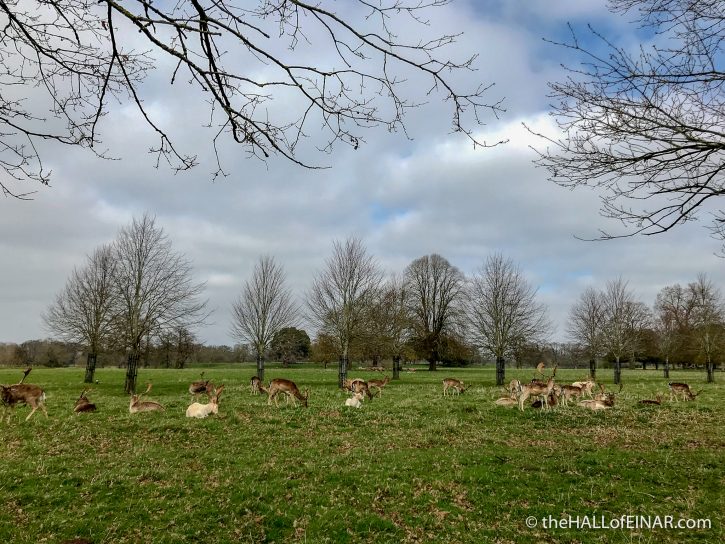
All the male Fallow Deer are together, sitting in a group. The females have been separated and are all on the other side of the river. They’re missing out on this male with the most magnificent antlers:
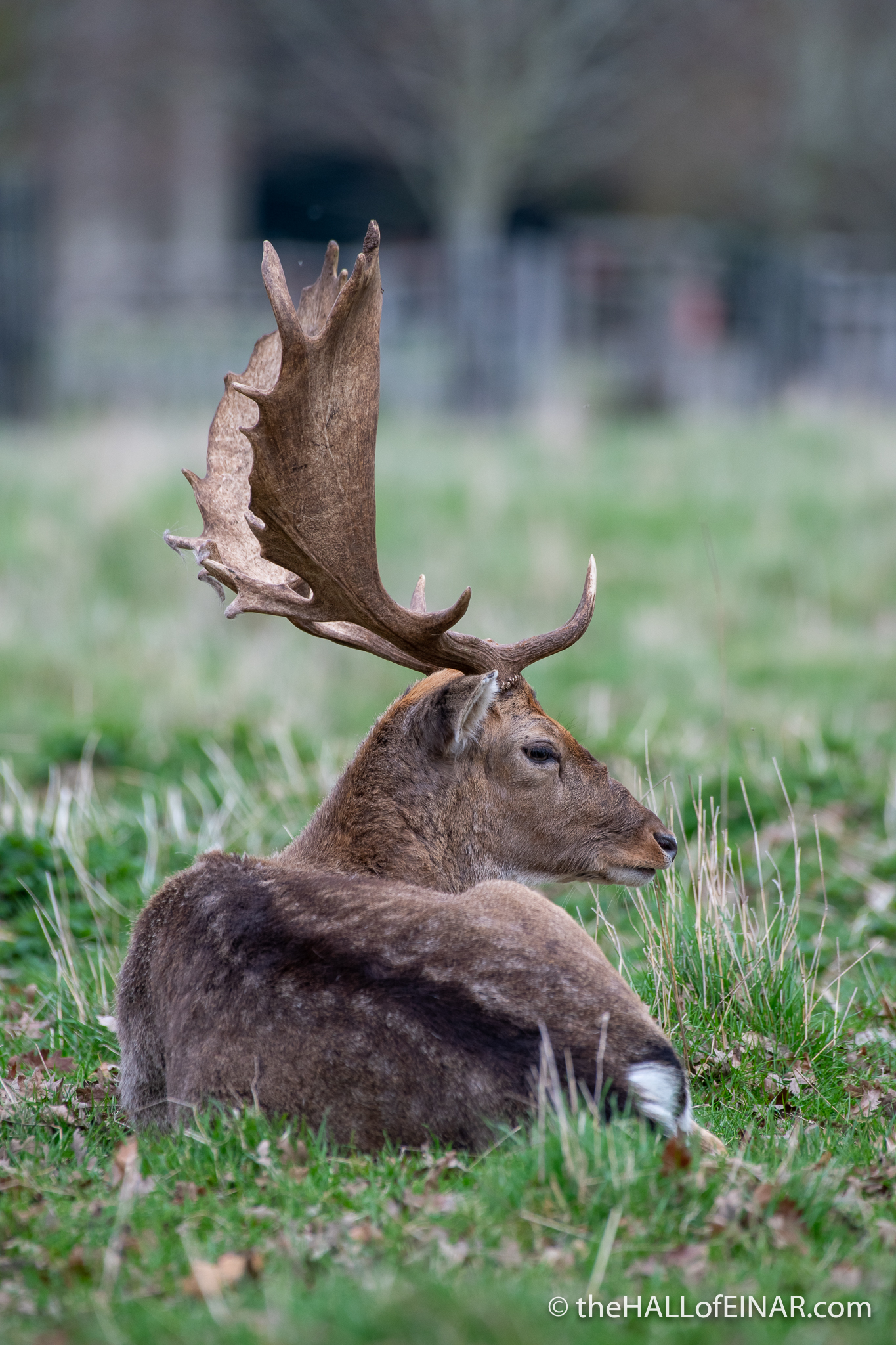
As I walk along the drive to the gatehouse I’m still wondering how the Lucy family got their money to build such a magnificent house surrounded by wonderful parkland:
1066: Those accompanying William The Conqueror On His Invasion Of England in 1066 are recorded.
Hugue de Montfort and Robert de Montfort, both ancestors of the ancient family of de Lucy from Charlecote, Warwickshire, are both listed on the plaque in the church at Dives-sur-Mer, Normandy, France, where William the Conqueror and his knights said mass before setting sail to invade England in 1066. It lists all the knights who took part in the invasion.
Okay, I understand now. The Lucy family’s ancestors stole the money by invading, and seizing land and assets here by force. And when they say ‘ancient family’, I assume they mean fabulously wealthy for a long time. Their family is no older than anyone else’s.
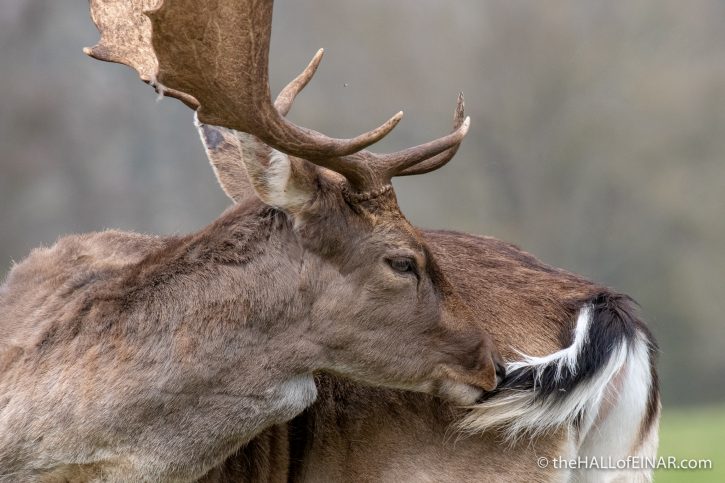
Being a successful Norman invader is one of the best moves one of your ancestors could possibly have made. Invasion has led to unimaginable wealth for a few. New research by Guy Shrubsole for Who Owns England? shows half of England is owned by less than 1% of the population. It’s not just the money, it’s the social class and life chances that have been transformed. For example, the ancestors of our Norman invaders, with Norman surnames like Darcy, Mandeville, Percy and Montgomery, have been over-represented at Oxford and Cambridge Universities for 27 generations.
If your ancestors had invaded then maybe you would have a huge country house with a deer park.
If not, you’ll just be another paying visitor, like me.
These Fallow Deer are wonderful animals.
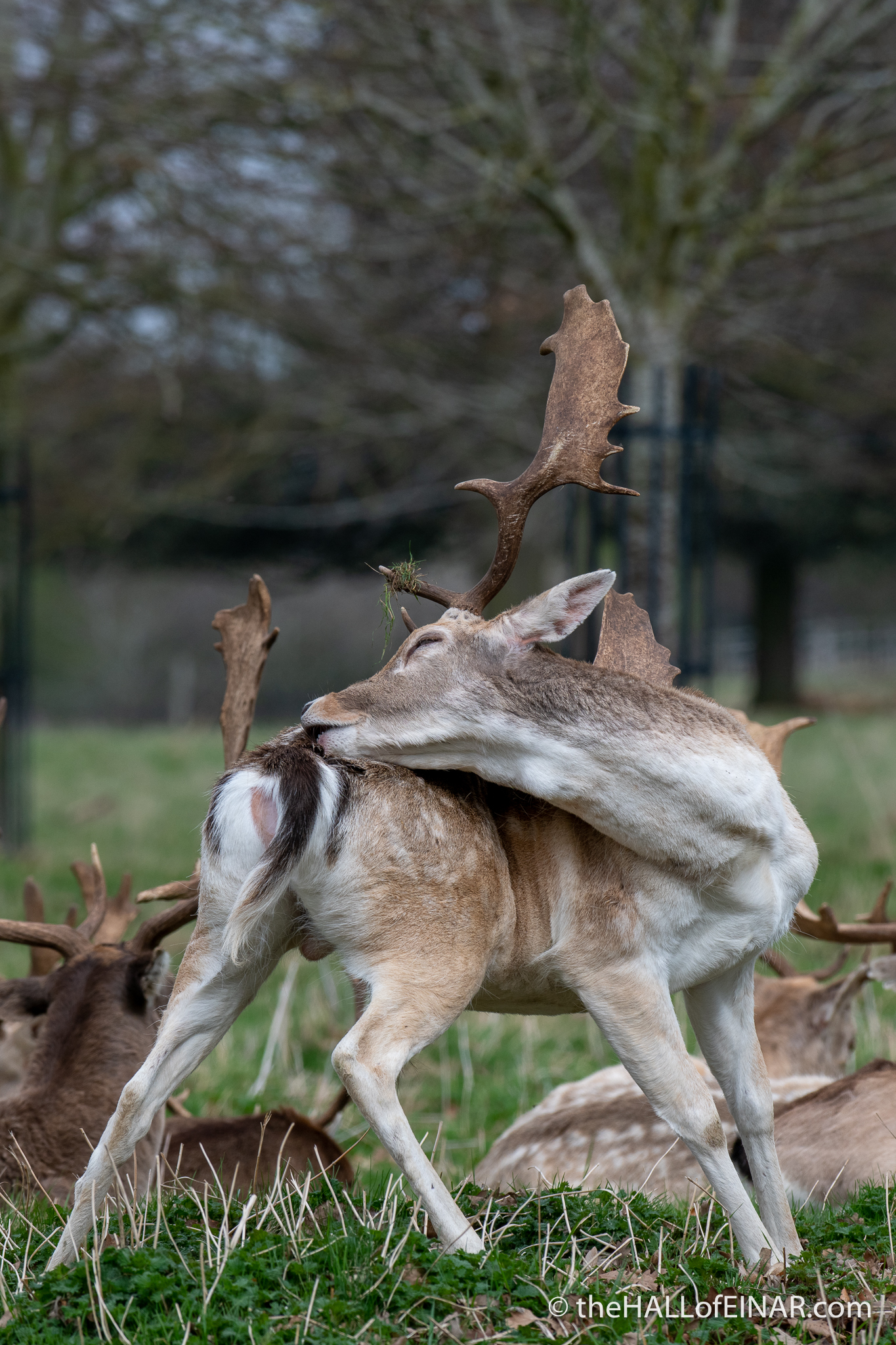
The National Trust say, “We keep the herd to around 200 deer and around 65-70 fawns were born last summer.” That means they kill a third of them every winter. The phrasal verb ‘to keep to’ is a euphemism for ‘killing’. I suspect venison is on the menu somewhere. They are a commercial herd, kept for meat and entertainment.
The deer are in a beautiful setting. This is just the gate house:
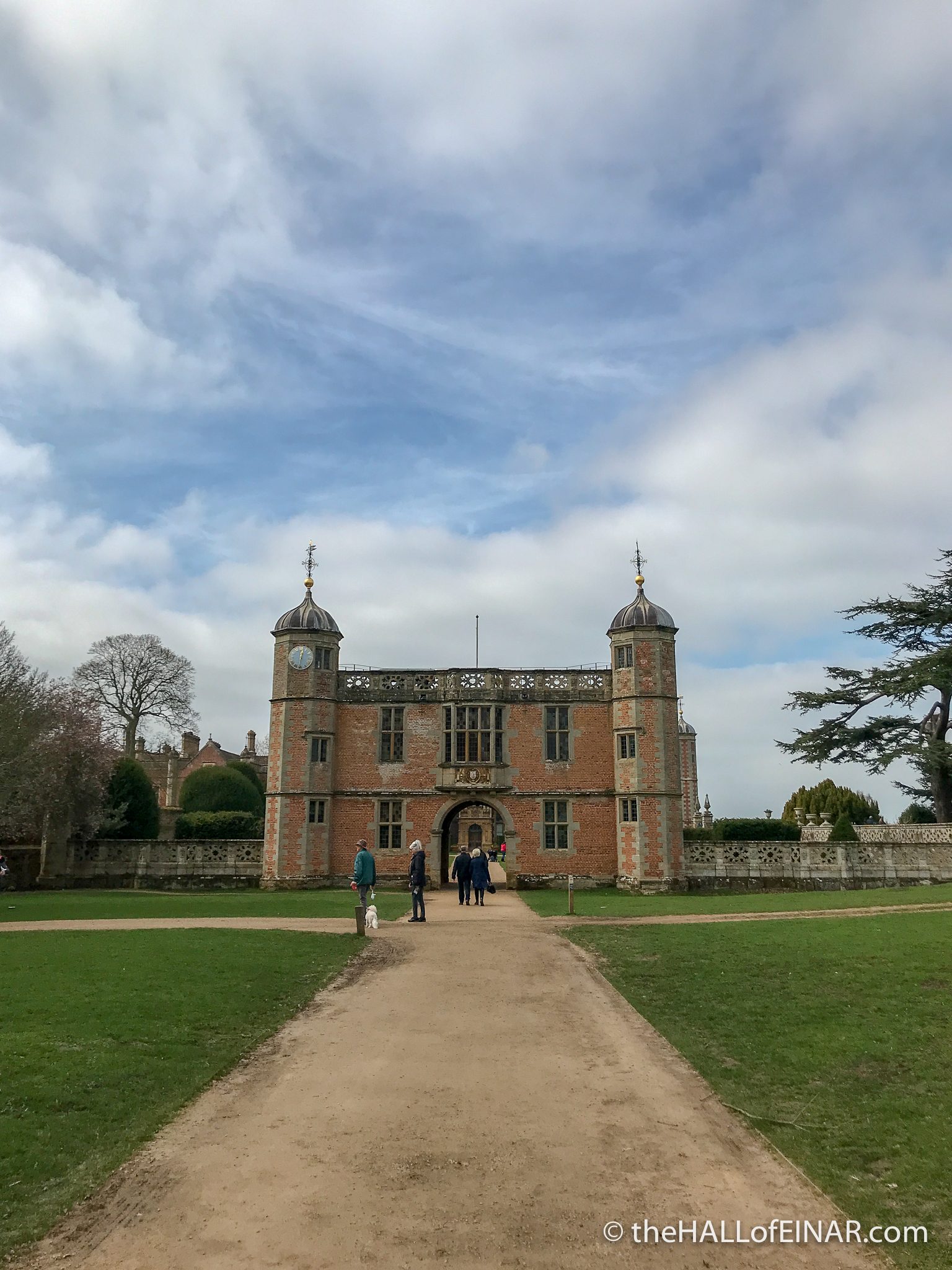
There’s a gold weather vane with three fish on it. The fish are Lucy, or Pike, Esox lucius. That’s the original meaning of the Lucy family’s name:
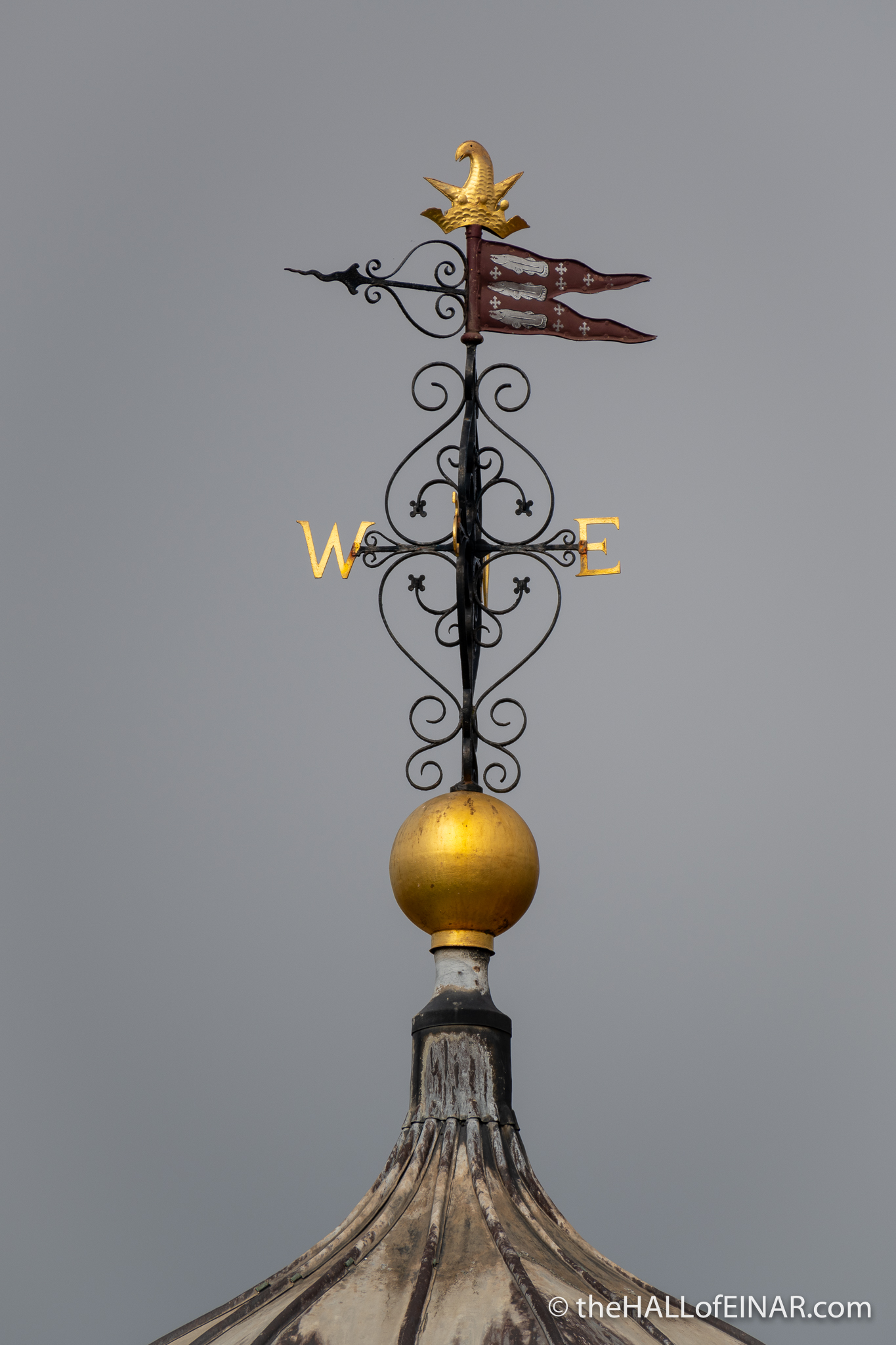
Pike are aggressive, territorial, kill smaller fish and are named after a weapon. The name suits them.
I’m bemused by the variety of colours of the Fallow Deer. They vary from almost black to almost white. I do a bit of research and find there are four types of colouring amongst the Fallow Deer here:
- Common. These are beige with faint spotted markings;
- Menil. These also have spots but have lighter, buff-coloured bellies;
- Melanistic. These are dark brown and black;
- Leucistic. These are pale cream or white.
I suspect this may be a leucistic one:
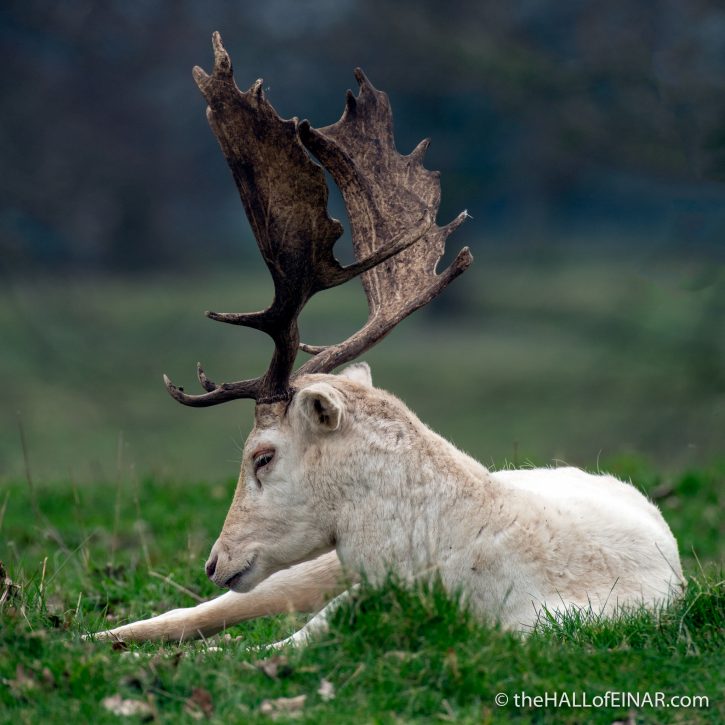
As I meander back to my car to continue my journey I wonder about the inequality and poverty we still have in this country and the vast inherited wealth, achieved through violence, all around us. In a country with rough sleeping, homelessness, child poverty and food banks, and a store of untapped talent because of a lack of resources, we need to find all the modern-day Darcys, Mandevilles, Percys and Montgomerys, and fight them; non-violently, of course.
Bring a metaphorical pitchfork.
